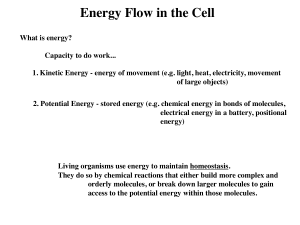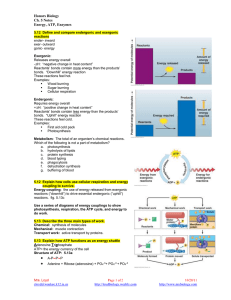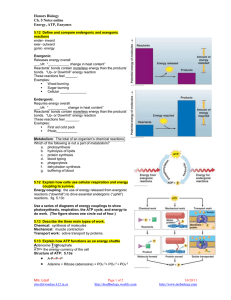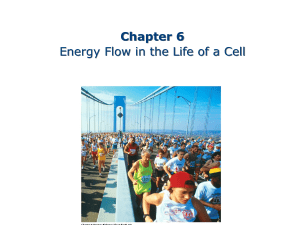Chapter 5 Energy.doc
advertisement
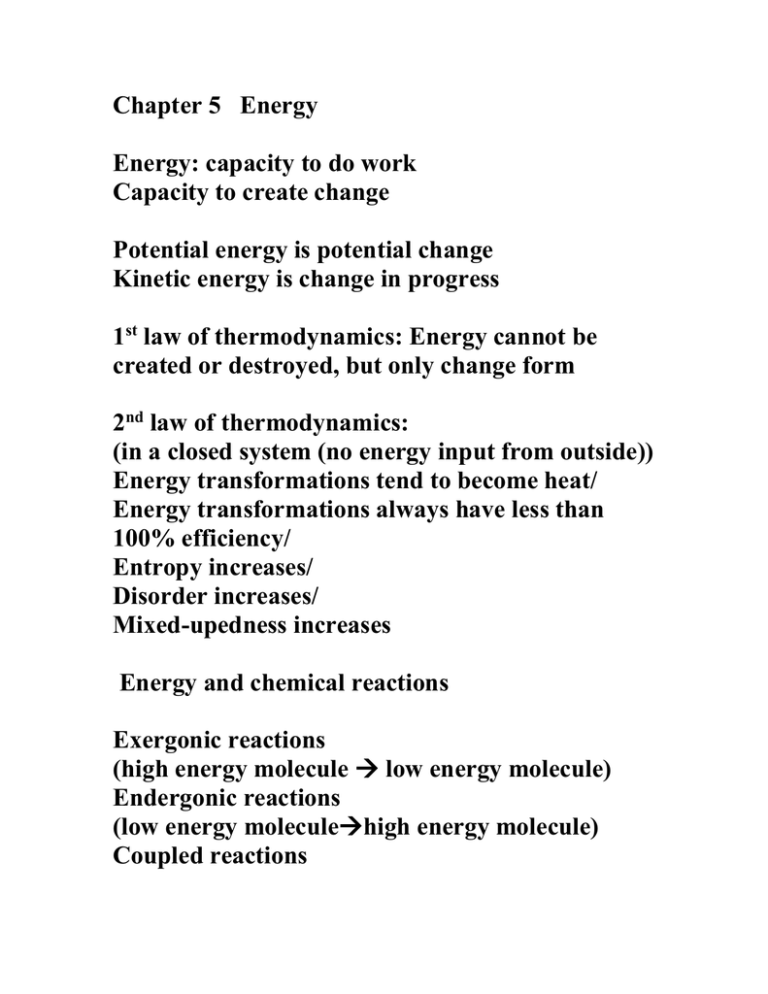
Chapter 5 Energy Energy: capacity to do work Capacity to create change Potential energy is potential change Kinetic energy is change in progress 1st law of thermodynamics: Energy cannot be created or destroyed, but only change form 2nd law of thermodynamics: (in a closed system (no energy input from outside)) Energy transformations tend to become heat/ Energy transformations always have less than 100% efficiency/ Entropy increases/ Disorder increases/ Mixed-upedness increases Energy and chemical reactions Exergonic reactions (high energy molecule low energy molecule) Endergonic reactions (low energy moleculehigh energy molecule) Coupled reactions ADP + P ATP endergonic Glucose CO2 + H2O exergonic Enzymes: catalyst Catalyst: speeds up a chemical reaction; lowers the activation energy Catalysts are not consumed by the reaction Catalysts are not strictly speaking necessary for the reaction to occur Spontaneous/exergonic reactions don’t initiate without activation energy (wood needs a spark to start burning, but not to continue burning) Enzymes allow living things to control the occurance and rate of chemical reactions Enzymes are proteins. Each enzyme has a very specific shape. Metabolism: All the chemical reactions in the body All the energy transformations in the body Metabolic rate: Rate of the chemical reactions Rate of the energy transformations Classify organisms by how they get energy Autotrophic: take sunlight and make food Heterotrophic: find food in the environment Redox reactions Reduction and oxidation Reduction (adding electrons, usually means adding energy) Oxidation (removing electrons, usually means lowering energy) Diffusion: particles move from high concentration to low concentration Osmosis: diffusion of water Direction of diffusion is from high concentration to low concentration Gradients are a form of potential energy Passive transport (diffusion and osmosis): no energy input needed, downhill, no ATP Active transport: cell working to move particle across a membrane to a higher concentration (uphill); requires ATP Osmosis of water Hypertonic solution (e.g. seawater): pulls water out of the cell Hypotonic (e.g. freshwater): drives water into the cell Isotonic (body fluids): equal osmotic pressures inside and outside of cell, no movement of water Endocytosis: cell membrane engulfs a volume of fluid, and forms a vesicle or vacuole that enters the cell Exocytosis: cell bulk export




